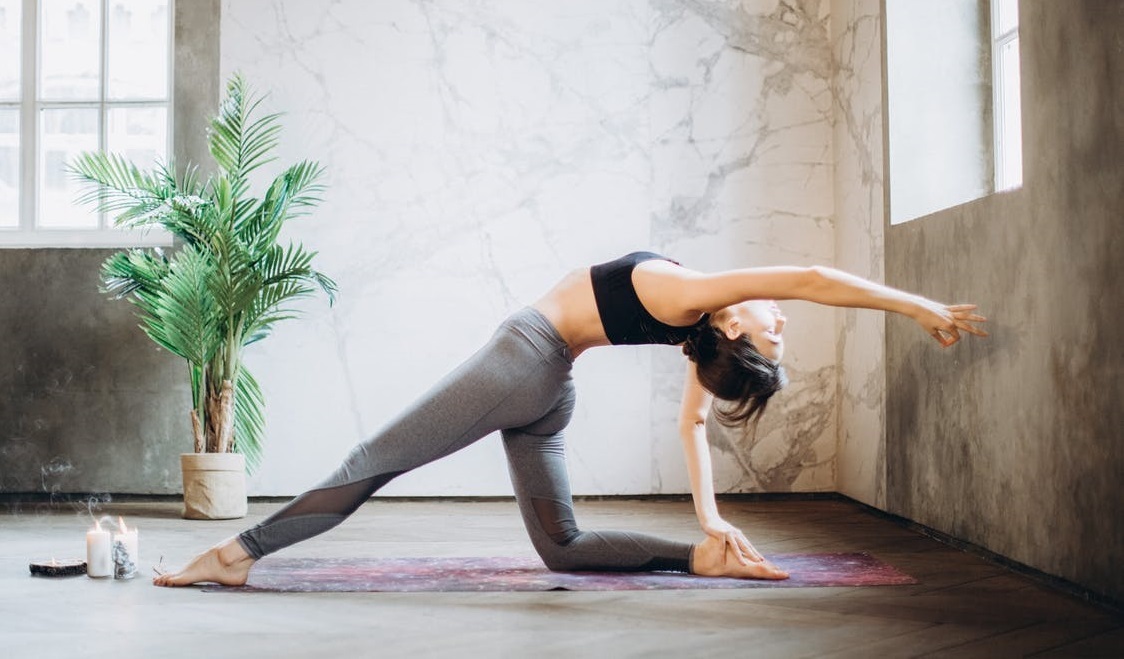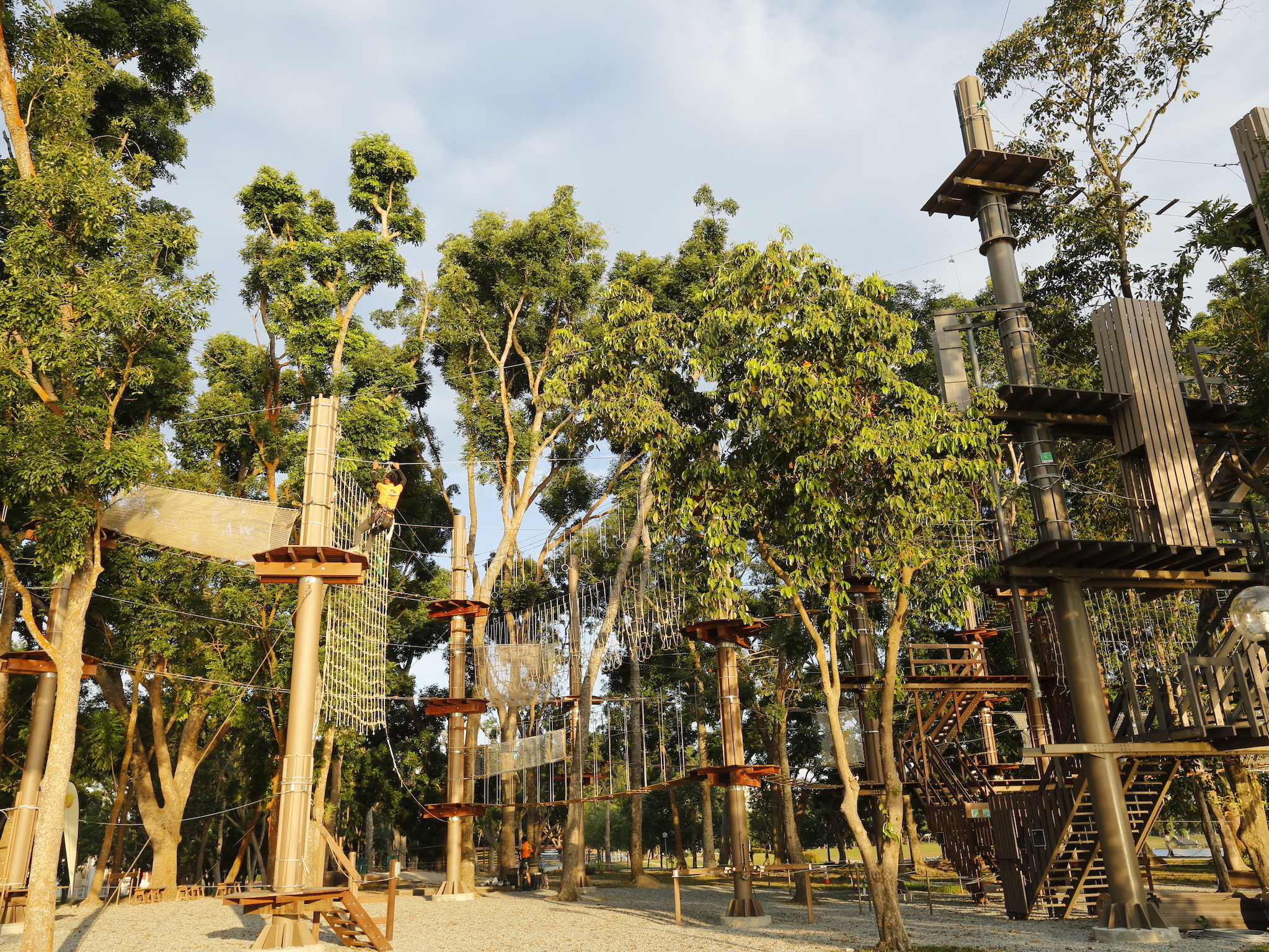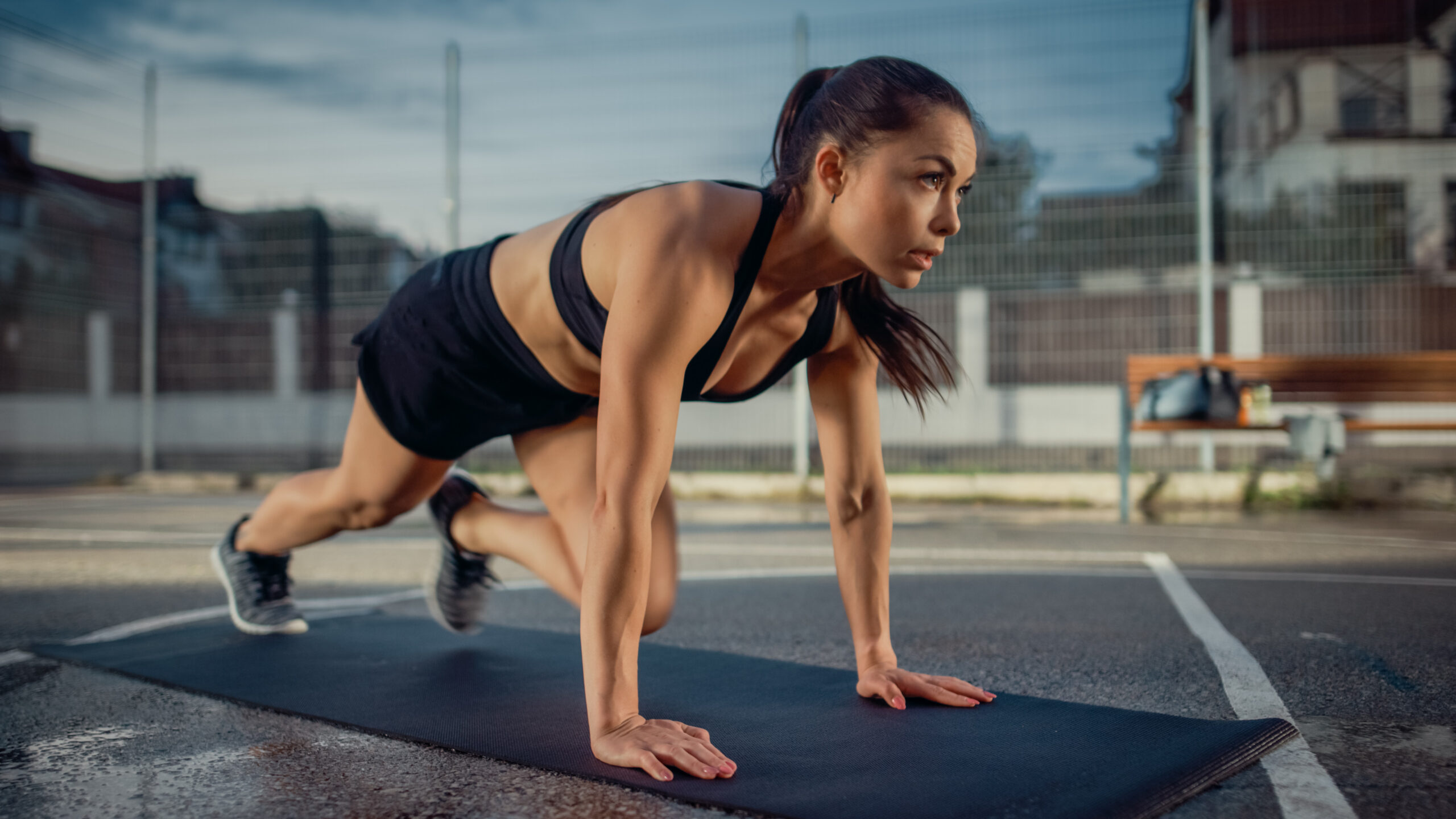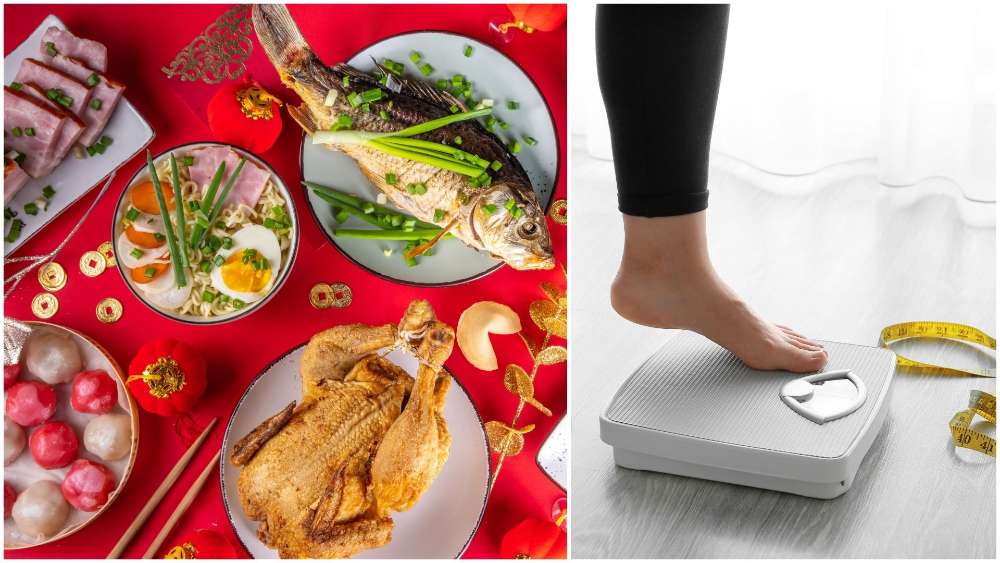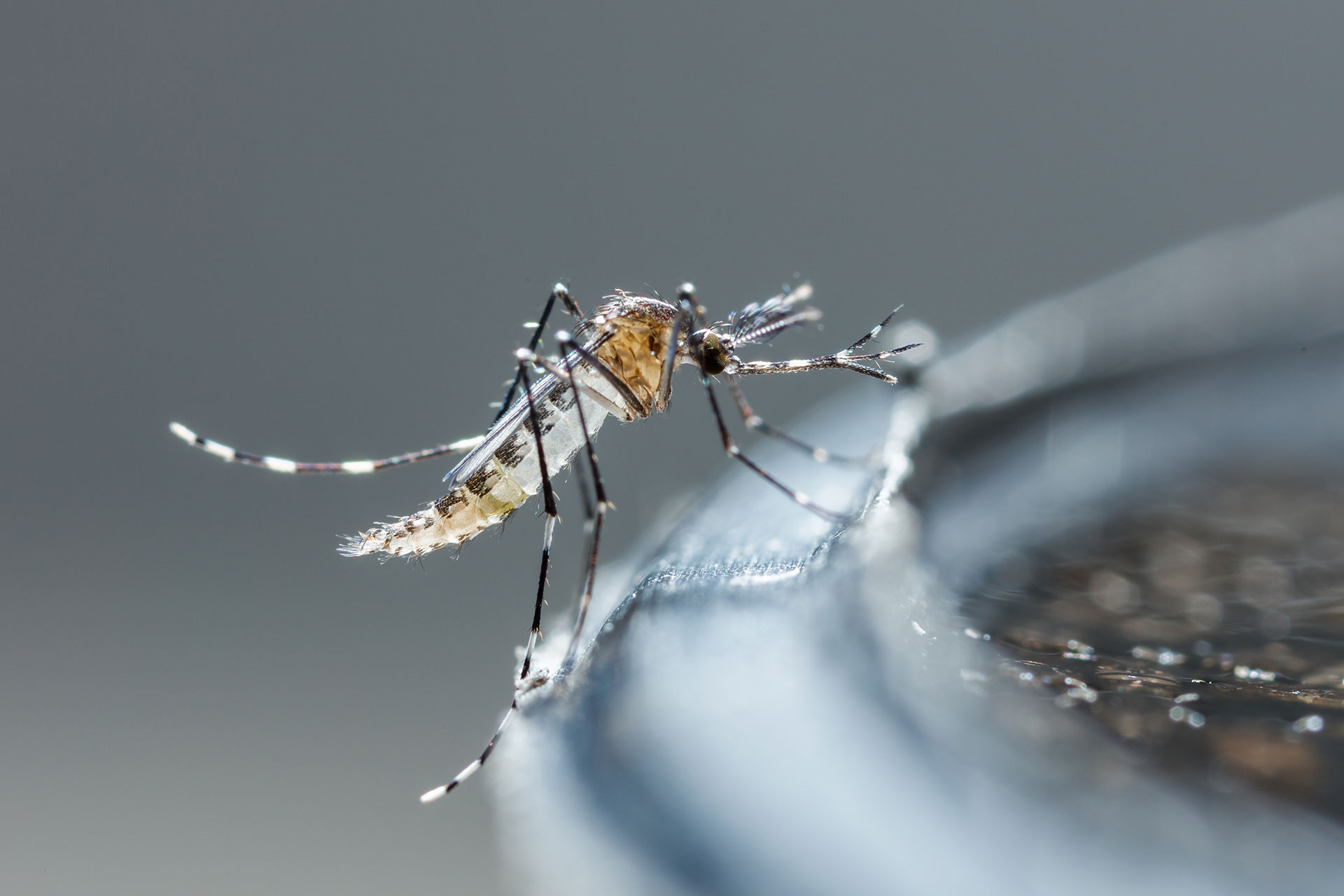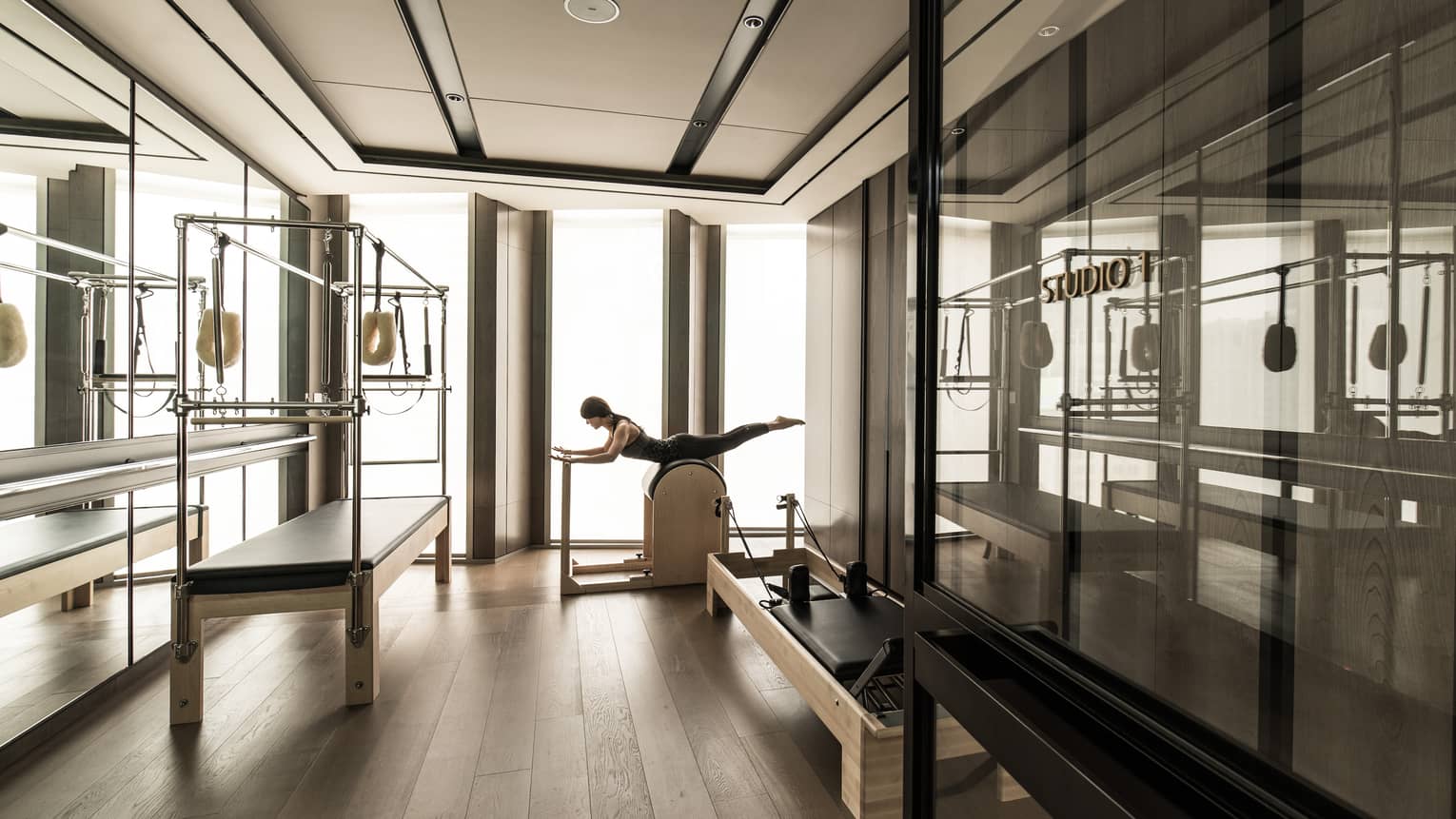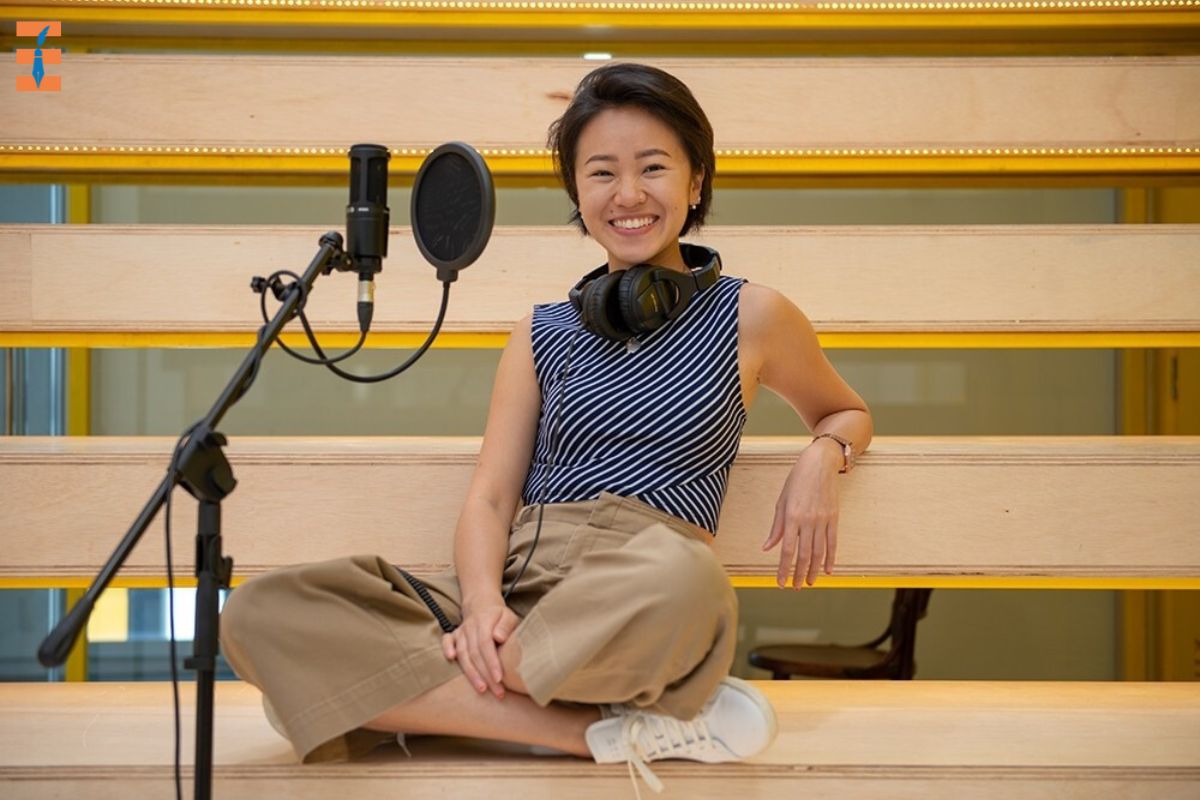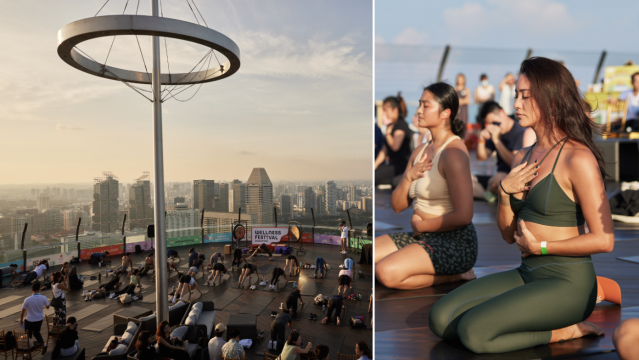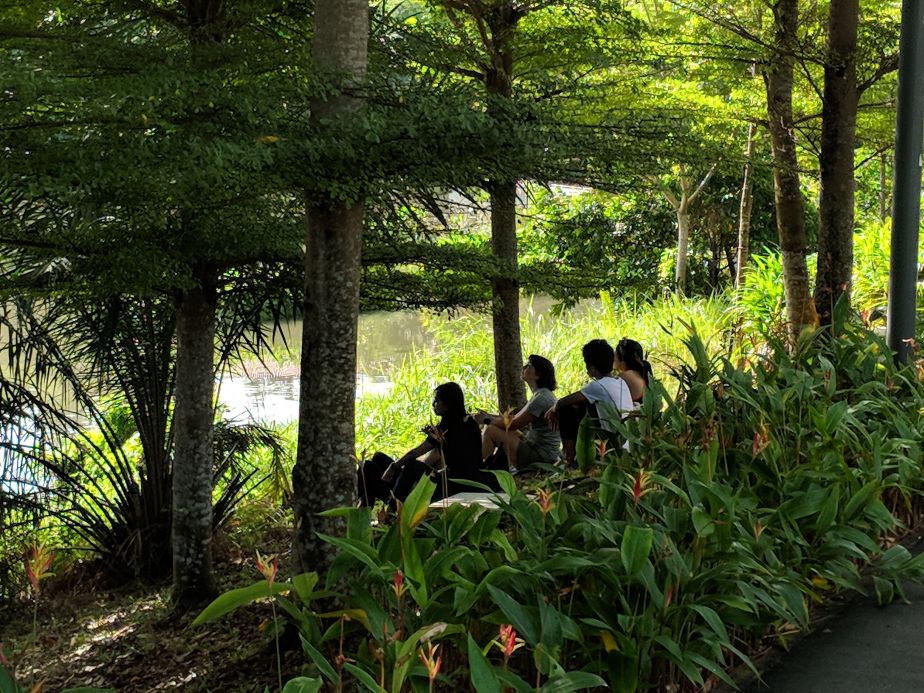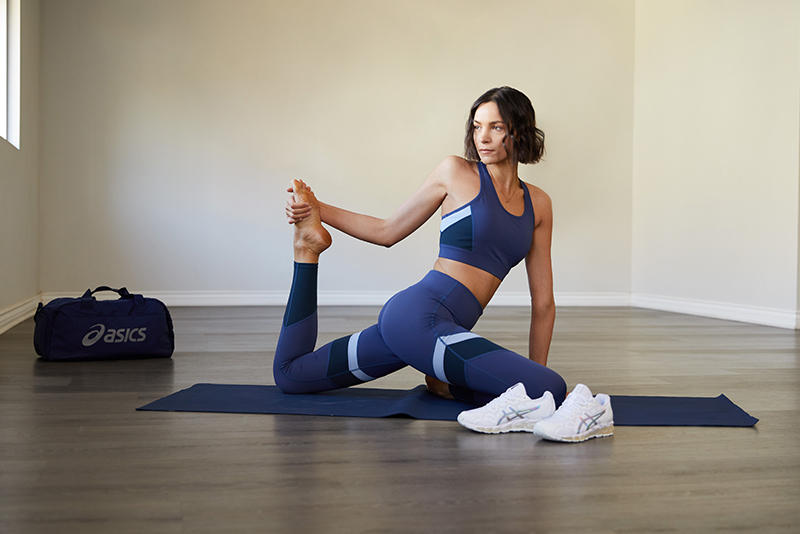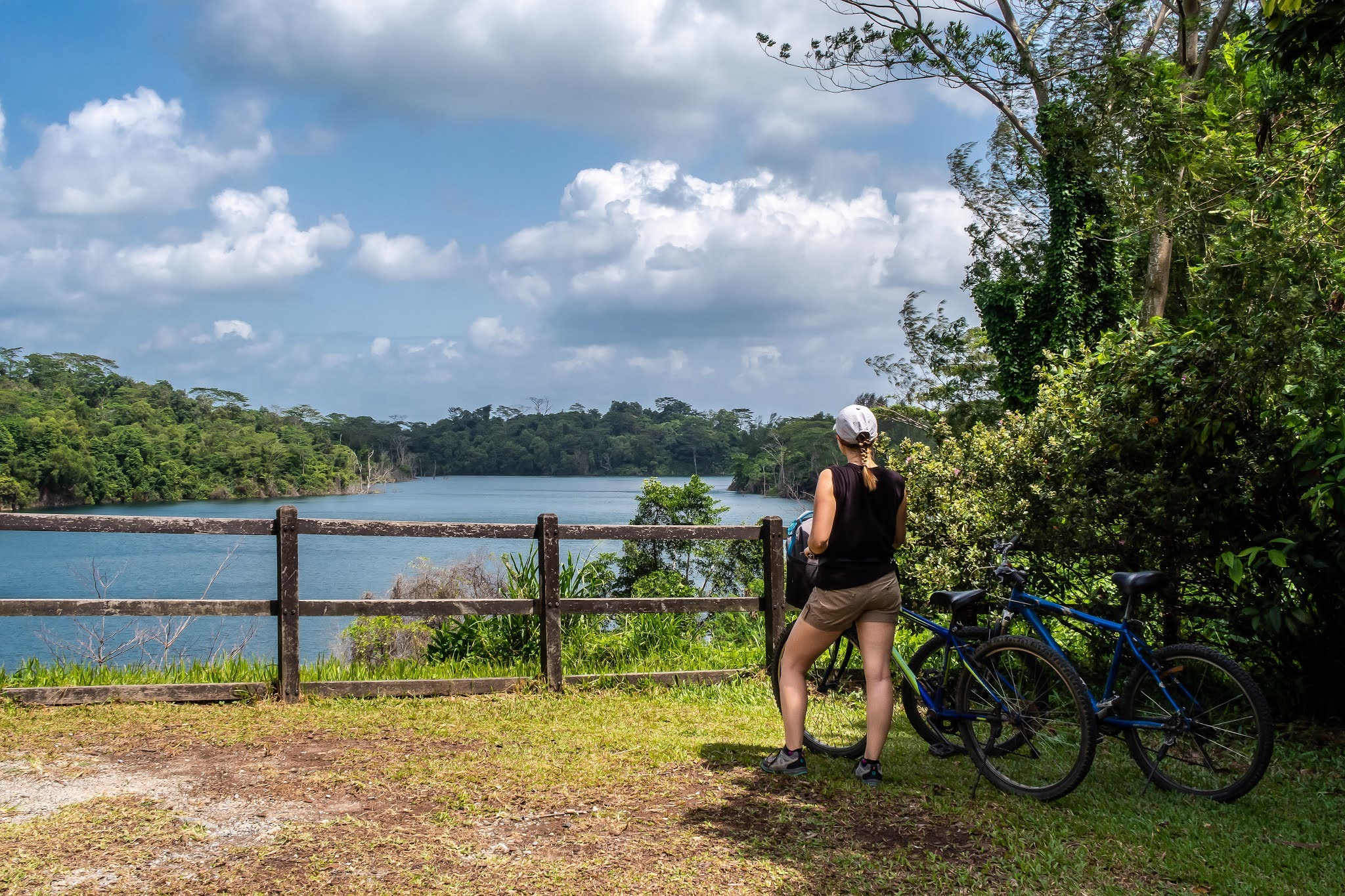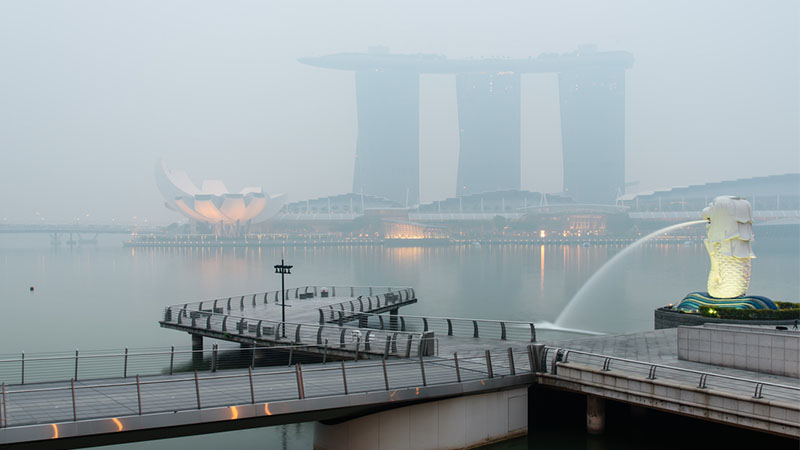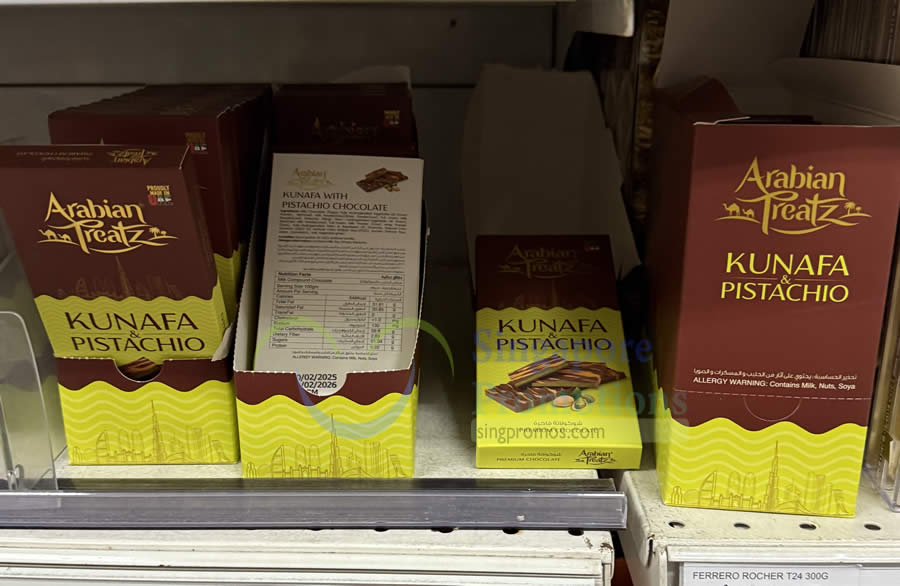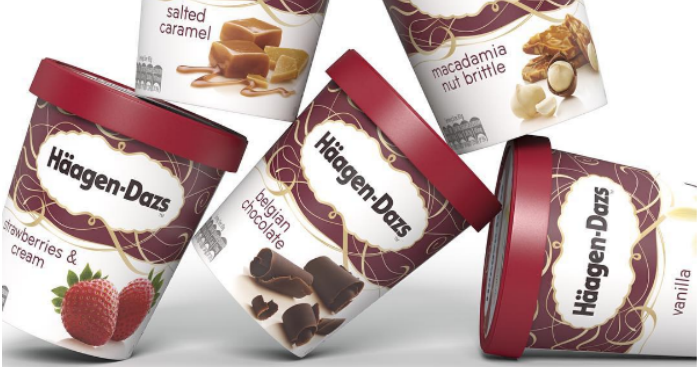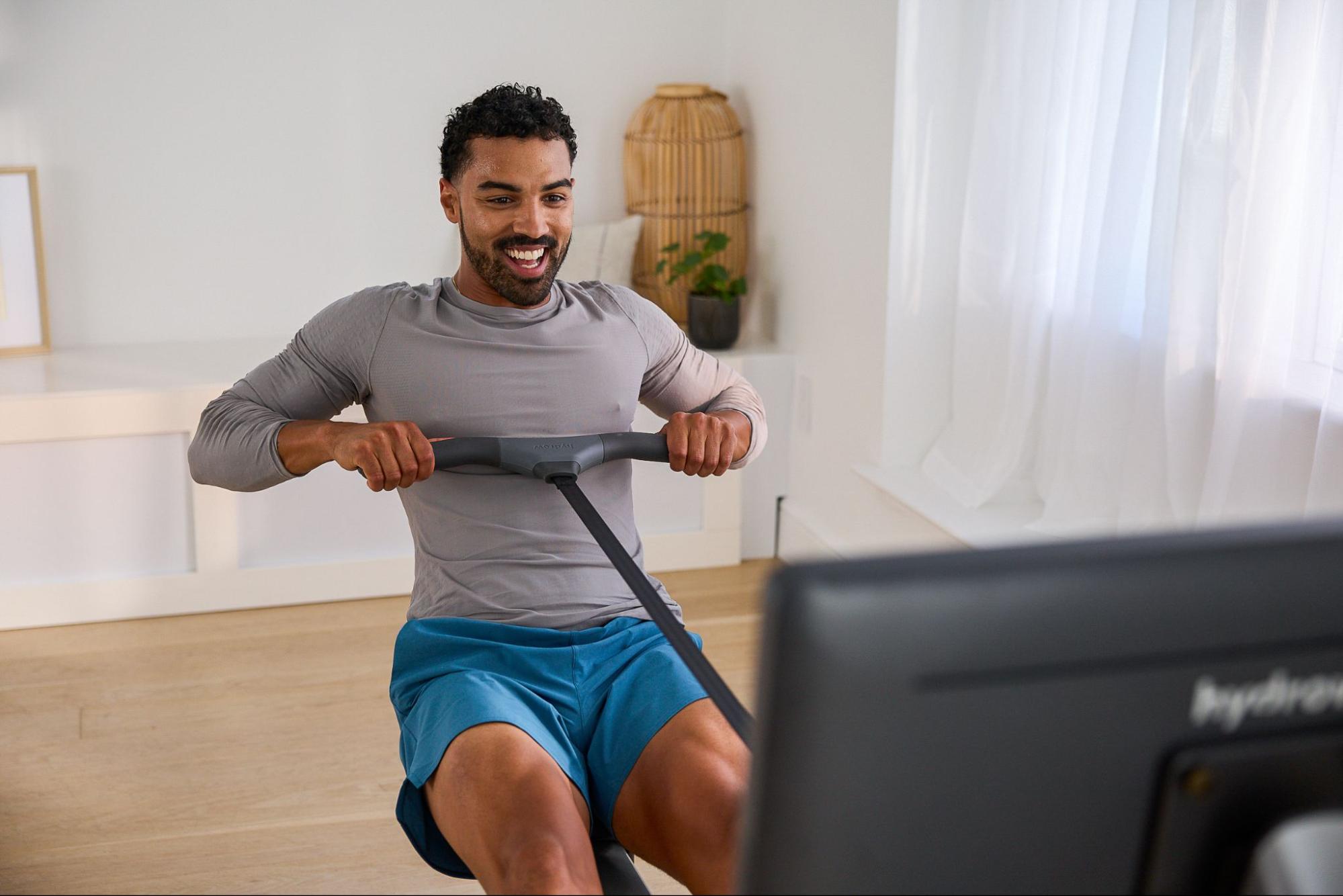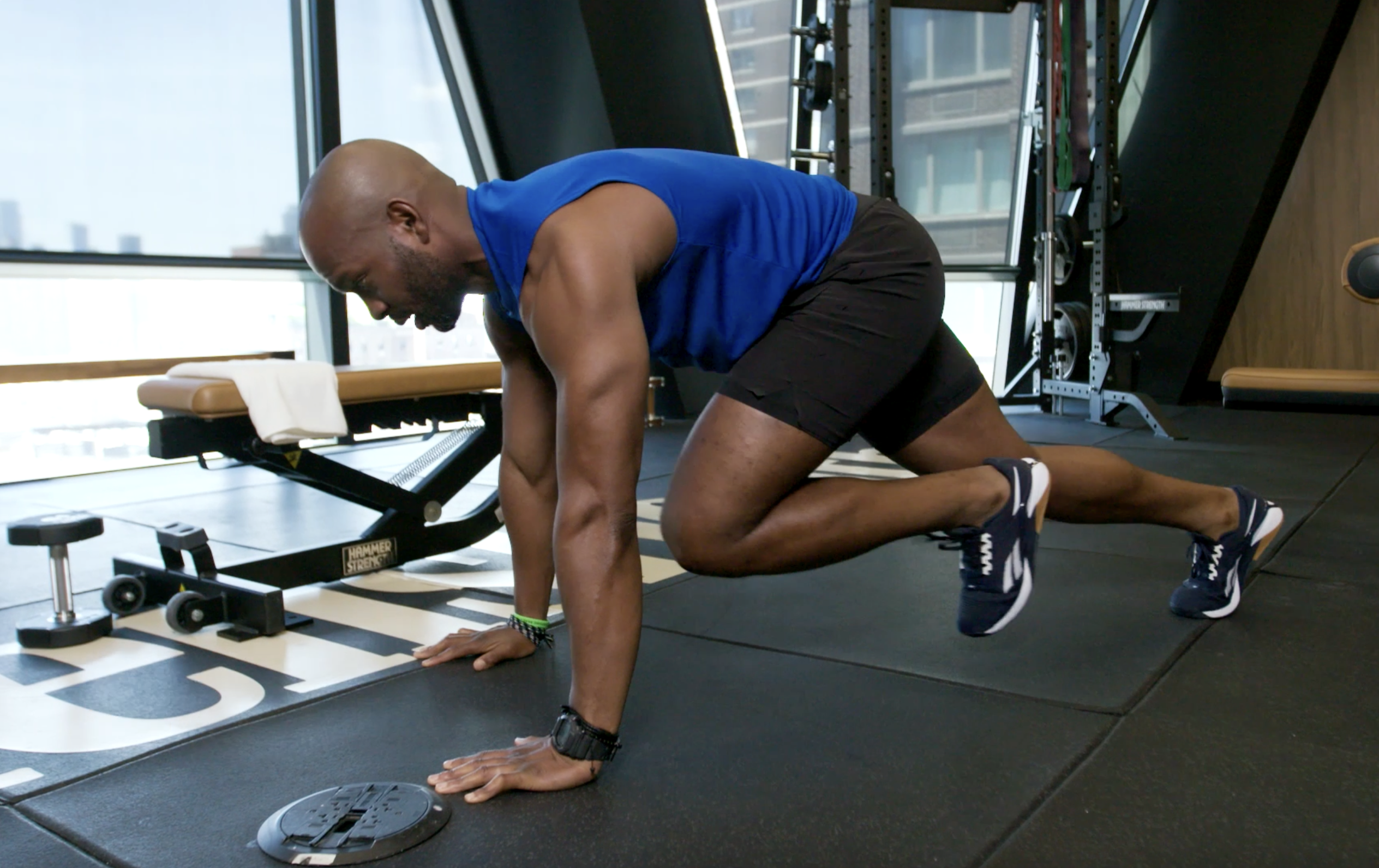In Singapore’s vibrant culinary landscape, while we often focus on flavor and convenience, the health of our gut microbiome – the trillions of beneficial bacteria residing in our digestive system – plays a crucial role in our overall well-being. A balanced gut microbiome contributes to digestion, immunity, nutrient absorption, and even mental health. Interestingly, Singaporean cuisine boasts a variety of fermented foods that are natural sources of probiotics, offering a delicious pathway to a healthier gut. Why a Healthy Gut Microbiome Matters (Especially in Singapore): Maintaining a thriving gut microbiome is essential for everyone, and in Singapore’s context, it can be particularly beneficial due to: Diverse Diet: Our exposure to a wide range of local and international cuisines means our gut needs a robust and diverse microbial community to process different food types. Stressful Urban Living: The fast-paced nature of life in Singapore can impact gut health. A healthy microbiome can help mitigate some of these effects. Immune Support: A strong gut microbiome is a key player in our immune system, helping us fight off common illnesses in Singapore’s tropical environment. Singapore’s Fermented Treasures: Local Sources of Gut-Friendly Bacteria: While probiotic supplements are available, incorporating naturally fermented foods into your diet provides a diverse range of beneficial bacteria along with other valuable nutrients. Here are some local and readily available fermented foods in Singapore that can contribute to a healthy gut: Kombucha: This fermented tea beverage has gained popularity in Singapore for its refreshing taste and potential probiotic benefits. Look for locally brewed options with lower sugar content. Local Connection: While not traditionally Singaporean, local craft breweries are experimenting with Singaporean flavors in their kombucha. Kefir: A fermented milk drink, kefir is another excellent source of diverse probiotics. You can find plain or flavored kefir in most supermarkets. Local Connection: Some local brands are producing kefir. Tempeh: This fermented soybean cake is a nutritional powerhouse, rich in protein, fiber, and probiotics. It’s a staple in Southeast Asian cuisine and widely available in Singapore. Local Connection: Tempeh is a common ingredient in Malay and Peranakan dishes. Tau Cheo (Fermented Soybean Paste): A savory and umami-rich paste made from fermented soybeans. It’s a key ingredient in many Nonya and Chinese dishes in Singapore. Local Connection: A fundamental flavor base in local culinary traditions. Chincalok/Cencaluk (Fermented Krill/Shrimp): A pungent fermented shrimp paste often eaten as a condiment with lime, chili, and shallots. Local Connection: A traditional Malay and Peranakan condiment. Belacan (Fermented Shrimp Paste): Another intensely flavored fermented shrimp paste, crucial for making sambal belacan and many Peranakan dishes. Local Connection: A cornerstone of local spicy sauces and dishes. Achar (Pickled Vegetables): While often made with vinegar, some achar preparations involve a slight fermentation process before pickling, which can contribute beneficial bacteria. Local Connection: A popular side dish with regional variations. Yogurt (with Live and Active Cultures): Widely available, choose plain, unsweetened yogurt with “live and active cultures” to ensure you’re getting probiotic benefits. Local Connection: Many brands cater to local tastes and preferences. Kimchi: While Korean in origin, this spicy fermented cabbage dish is widely enjoyed and readily available in Singapore, offering a good dose of probiotics. Local Connection: A popular side dish in Korean eateries and supermarkets. Incorporating Singaporean Fermented Foods for a Healthier Gut: Here are practical ways to include these local probiotic sources in your Singaporean diet: Start Small: Introduce fermented foods gradually to allow your gut to adjust. Variety is Key: Consume a range of different fermented foods to diversify your gut microbiome. Read Labels: When buying commercially prepared fermented foods, check for “live and active cultures” and opt for options with lower sugar and sodium content. Enjoy as Part of Meals: Incorporate tempeh into stir-fries or curries, use tau cheo in braised dishes, or enjoy chincalok as a condiment. Snack Smart: Choose yogurt or a small serving of kombucha as a healthy snack. Experiment with Recipes: Explore local recipes that feature fermented ingredients. Beyond Fermented Foods: Supporting a Healthy Gut Microbiome in Singapore: While fermented foods are a great source of probiotics, a holistic approach to gut health in Singapore also includes: A Fiber-Rich Diet: Consume plenty of fruits, vegetables, and whole grains, which act as prebiotics, feeding your beneficial gut bacteria. Limit Processed Foods and Sugary Drinks: These can negatively impact the balance of your gut microbiome. Stay Hydrated: Adequate water intake is essential for overall gut health. Manage Stress: High stress levels can disrupt the gut microbiome. Practice stress-reducing activities. Consider Prebiotic-Rich Local Foods: Garlic, onions, bananas, and some traditional vegetables can also support a healthy gut. Nourishing your gut microbiome is an ongoing journey, and Singapore’s unique food culture offers delicious and accessible ways to incorporate beneficial bacteria into your diet. By exploring local fermented treasures and adopting a balanced approach to eating, you can cultivate a thriving gut and contribute to your overall health and well-being in Singapore.
Building Strong Bones in Sunny Singapore: The Vital Roles of Calcium and Vitamin D for Adults
Maintaining strong and healthy bones is essential for overall well-being throughout adulthood, and in Singapore’s unique environment, understanding the interplay of calcium and vitamin D is key. While the tropical sun is abundant, lifestyle factors can impact vitamin D levels. This guide outlines the vital roles of these nutrients, provides dietary recommendations tailored for Singaporean adults, and offers advice on safe sunlight exposure. The Dynamic Duo: Calcium and Vitamin D for Bone Strength Calcium is the primary mineral responsible for building and maintaining strong bones. It provides the structural framework and density necessary to prevent fractures and osteoporosis. However, calcium cannot work effectively without vitamin D. Vitamin D plays a crucial role in: Enhancing Calcium Absorption: Vitamin D helps the body absorb calcium from the diet in the intestines. Regulating Calcium Levels: It helps maintain the right amount of calcium in the blood, which is essential for bone health. Dietary Recommendations for Calcium Intake in Singaporean Adults: Ensuring adequate calcium intake through diet is the first step towards strong bones. Here are the recommended daily allowances (RDAs) for calcium for Singaporean adults, according to the Health Promotion Board (HPB): Adults (19-50 years): 800 mg per day Adults (51 years and above): 1000 mg per day Pregnant and Breastfeeding Women: 1000 mg per day Adolescents (10-18 years): 1000 mg per day Excellent Dietary Sources of Calcium Readily Available in Singapore: Dairy Products: Milk, cheese, yogurt (choose lower-fat options where possible). Fortified milk can be a particularly good source. Leafy Green Vegetables: Kai Lan, spinach, and Chye Sim. Tofu and Soy Products: Tofu, soy milk (often fortified with calcium). Fish with Edible Bones: Canned sardines and salmon. Fortified Foods: Some plant-based milks, cereals, and fruit juices are fortified with calcium. Nuts and Seeds: Almonds are a good source. Beans and Legumes: Chickpeas, kidney beans. Shrimp: A local favorite that contributes to calcium intake. The Sunshine Vitamin: Optimizing Vitamin D Levels in Singapore: Despite Singapore’s year-round sunshine, vitamin D deficiency is surprisingly common due to indoor lifestyles, sunscreen use, and darker skin pigmentation requiring more sun exposure for vitamin D synthesis. Dietary Recommendations for Vitamin D Intake: The recommended daily allowance (RDA) for vitamin D in Singapore adults is generally 2.5 mcg (100 IU). However, some guidelines suggest higher intakes may be beneficial, and individual needs can vary. Dietary Sources of Vitamin D (Limited): Fatty Fish: Salmon, mackerel, and sardines. Egg Yolks. Mushrooms: Some varieties, especially those exposed to UV light. Fortified Foods: Some milk, yogurt, cereals, and plant-based milk alternatives are fortified with vitamin D. The Importance of Safe Sunlight Exposure in Singapore: Sunlight is the most efficient way for most people to produce vitamin D. The ultraviolet B (UVB) rays from the sun trigger vitamin D synthesis in the skin. Here’s how to get vitamin D safely in Singapore: Aim for Short, Regular Exposure: Expose arms and legs to direct sunlight for approximately 5-30 minutes, at least twice a week. Optimal Timing: The best time for vitamin D synthesis is generally between 10 am and 3 pm when UVB rays are strongest. However, be mindful of the intense midday sun and avoid prolonged exposure that can lead to sunburn. Early morning or late afternoon sun exposure can also contribute. Consider Skin Tone: Individuals with darker skin need longer sun exposure to produce the same amount of vitamin D as those with lighter skin due to the melanin pigment acting as a natural sunscreen. Be Mindful of Sunscreen: While essential for preventing skin cancer and premature aging, sunscreen significantly blocks UVB rays and reduces vitamin D production. Balance sun safety with vitamin D needs. Consider short periods of sun exposure without sunscreen specifically for vitamin D synthesis, followed by sunscreen application. Glass Blocks UVB: Sunlight exposure through windows will not effectively produce vitamin D. Supplementation: If dietary intake and safe sun exposure are insufficient to meet your vitamin D needs, your doctor may recommend vitamin D supplements. Calcium supplements may also be considered if dietary intake is inadequate, but it’s best to prioritize food sources first. Always consult a healthcare professional before starting any supplementation. Lifestyle Factors for Bone Health: Beyond calcium and vitamin D, other lifestyle factors contribute to bone health: Weight-bearing and Resistance Exercises: Activities like walking, jogging, dancing, and strength training help build and maintain bone density. Adequate Intake of Other Nutrients: Magnesium, phosphorus, vitamin K, and vitamin C also play supportive roles in bone health. Avoiding Smoking and Excessive Alcohol Consumption: These habits can negatively impact bone density. Conclusion: For Singaporean adults, maintaining strong bones requires a conscious effort to obtain adequate calcium through a balanced diet and optimize vitamin D levels through a combination of safe sunlight exposure and dietary sources. Understanding individual needs and consulting healthcare professionals for personalized advice on supplementation when necessary are crucial steps towards lifelong bone health in Singapore’s unique environment.
How Singapore’s Seniors Stay Fit and Thriving Near Home
Aging gracefully isn’t just about counting years—it’s about staying healthy, engaged, and connected to the community. Across Singapore’s heartlands, senior citizens are proving that age is just a number, thanks to the rise of active aging initiatives that bring fitness and fun closer to home. 🧘♂️ The New Face of Aging Forget outdated stereotypes. Today’s seniors are hitting the parks, community centers, and fitness corners with more energy than ever. Whether it’s a morning brisk walk, group tai chi session, or aqua aerobics at the community pool, the goal is simple: stay active, stay independent. As Singapore faces a rapidly aging population, active aging has become a national priority. The idea is to empower seniors to take charge of their health and well-being, especially by making programs accessible in the heartlands, where most seniors live. 🏠 What Are the Heartlands Offering? In places like Ang Mo Kio, Bedok, Tampines, and Jurong, seniors are tapping into a wide range of fitness and wellness activities—most of which are free or heavily subsidized. Popular offerings include: Sunrise Tai Chi at void decks and community parks Mall walking groups for seniors who prefer air-conditioned environments Senior-friendly gym equipment at ActiveSG gyms and public fitness corners SilverSneakers-inspired classes like chair yoga and Zumba Gold These programs are more than just exercise—they promote social connection, reduce isolation, and keep mental faculties sharp. 👥 The Role of Community Centers and Grassroots Many of these activities are run by People’s Association (PA) through Community Clubs (CCs) and Senior Activity Centres. These centers are becoming vital hubs where seniors gather to learn, play, and grow. For instance, some CCs offer workshops on nutrition, smartphone use, and even TikTok classes for seniors looking to stay trendy and connected with their grandkids! 🚶♂️ Real Stories from the Ground Mr. Tan, 71, from Bishan says, “Joining the walking club every morning keeps me motivated. I’ve made new friends, and my blood pressure has improved!” Mdm Lim, 67, from Bukit Panjang, adds, “We laugh, we dance, we sweat. It’s not just about the body—it’s good for the heart and soul.” 💡 Why It Matters Active aging doesn’t just benefit individuals—it reduces the burden on healthcare systems, keeps families closer, and strengthens community bonds. By placing these programs in the heartlands, Singapore ensures no senior is left behind, even if they don’t drive or live near a major medical facility. ✅ Final Thoughts The movement toward active aging in the heartlands is not just a policy—it’s a lifestyle transformation. With strong community support and accessible options, seniors across Singapore are redefining what it means to grow older. If you’re a caregiver, family member, or senior yourself, there’s never been a better time to explore these programs. Age actively, live fully—right in your own neighborhood.
Top 2025 Fitness Trends Singaporeans Can’t Get Enough Of
As Singaporeans continue to embrace health and wellness in 2025, a new wave of fitness trends has taken the nation by storm. From futuristic tech to mindful movement, the Lion City is redefining what it means to stay fit. Here’s a breakdown of the hottest trends you’ll see in gyms, parks, and even at home this year. 1. Biohacking: Optimising the Body with Science Singapore’s health enthusiasts are diving into biohacking — using technology and science to “hack” the body’s performance. Think wearable fitness trackers that monitor everything from oxygen levels to sleep cycles, cryotherapy sessions, red light therapy, and even nootropics for sharper focus during workouts. 2. Virtual & Augmented Reality Workouts Fitness is no longer confined to physical locations. With virtual reality (VR) workouts and AR fitness games, users can now run on a digital beach or box in a virtual ring — all from home. Apps like Supernatural and FitXR are seeing increased adoption in Singapore’s urban apartments. 3. Hybrid Gyms and At-Home Fitness Post-pandemic flexibility is here to stay. Hybrid gyms that offer both physical classes and live-streamed sessions have become the norm. Popular local studios now offer members the choice to work out in-person or from the comfort of their HDB flat. 4. Mindful Movement and Mental Fitness 2025 is also about slowing down. Yoga, tai chi, and breathwork sessions are gaining popularity among younger crowds seeking mental clarity and stress relief. Singaporeans are seeing the benefits of integrating both physical and emotional wellness into their routines. 5. Outdoor Functional Training & Group Classes With more green spaces being upgraded across Singapore, outdoor bootcamps, circuit training, and functional fitness classes are booming. From Marina Bay to East Coast Park, it’s not unusual to see weekend warriors flipping tires and swinging kettlebells with a view. 6. Personalized Fitness Plans with AI AI-powered fitness apps that adapt routines based on user progress and biometric data are changing the game. Singaporeans are loving the custom-fit experience — whether it’s adjusting intensity or suggesting the perfect recovery session. 7. Smart Fitness Equipment From smart mirrors that double as personal trainers to compact treadmills with data tracking, smart equipment is becoming a staple in Singaporean homes. Brands like Tonal, Peloton, and Lululemon’s Mirror are gaining traction among working professionals. Takeaway Fitness in 2025 isn’t just about aesthetics — it’s about balance, technology, and long-term well-being. As Singaporeans continue to prioritise health, these innovative trends are helping redefine the future of fitness.
Top 10 Local Fitness Influencers in Singapore You Need to Follow Right Now
In the age of digital wellness, fitness influencers are the new personal trainers. Whether you’re seeking motivation to hit the gym, nutrition tips, or just aesthetically pleasing workout content, these local fitness stars deliver the goods — and gains. Here are 10 of the most impactful fitness influencers in Singapore that you should follow now. 1. Cheryl Tay (@cheryltaysg) A certified personal trainer and body confidence advocate, Cheryl is known for her journey with body positivity and mental health. She founded the Rock The Naked Truth movement, encouraging others to embrace their bodies through fitness. 2. Tyen Rasif (@tyenrasif) Tyen is a national athlete, fitness coach, and singer who often shares workout routines, gym vlogs, and transformation stories. She’s also a former Miss Universe Singapore contestant with a powerful voice in female empowerment. 3. Jamie Pang (@jamiepangfitness) Jamie’s feed is filled with high-intensity workouts, meal prep ideas, and gym motivation. Her expertise in strength training and her personal fitness transformation make her one of the most relatable figures in the industry. 4. Kevin Chiak (@kevinchiak) As a physique coach and gym owner, Kevin is known for his tailored coaching techniques. He’s also deeply involved in bodybuilding and often mentors aspiring athletes. 5. Saffron Sharpe (@saffronsharpe) Fitness meets fashion with Saffron. While she’s known as a lifestyle influencer, her consistent health-conscious routines and yoga content keep her grounded in the fitness space. 6. Fauzi Aziz (@fauzify) Combining humor with health, Fauzi shares practical home workouts and is a strong advocate for body diversity. His energy and authenticity make fitness less intimidating. 7. Natasha Studio (@natashastudio.sg) Natasha runs one of the most followed reformer pilates studios in Singapore. Her content bridges luxury wellness with holistic fitness and body sculpting. 8. Yin (@yins.yoga) A certified yoga instructor with over a decade of experience, Yin shares daily yoga poses, breathing exercises, and mindfulness tips to promote mental clarity and physical strength. 9. Willie Ong (@willieongfitness) Willie offers more than just gym content. He dives into fitness science, injury prevention, and long-term sustainability in strength and mobility training. 10. Joanne Soh (@joannasohofficial) Although based in Malaysia, Joanne’s following is massive in Singapore. Her YouTube workouts and meal prep guides make her a go-to for people looking to start their fitness journey at home. Why Follow Local Fitness Influencers? These fitness influencers are not just about looking good — they promote healthier lifestyles, mental well-being, and local community engagement. Whether you’re into HIIT, yoga, weightlifting, or body confidence, there’s someone on this list who resonates with your vibe.
How to Train for Your First 10K in Singapore’s Urban Jungle
Running your first 10K is a thrilling challenge — and if you’re in Singapore, you’ve got a unique landscape to train in. With its humid weather, iconic skyline, and bustling city parks, the Lion City offers both excitement and hurdles for new runners. Whether you’re signing up for the next big race or just trying to build endurance, here’s a complete guide to help you train smart and stay motivated. 1. Understand What You’re Up Against — Singapore’s Heat & Humidity Let’s be real: running in Singapore isn’t like training in cool weather countries. The combination of heat and humidity can wear you down faster than you think. Hydration, timing, and pace awareness become crucial. Tip:Run early in the morning (before 8am) or after sunset when temperatures are lower. 2. Pick the Right Gear for Singapore Weather Invest in lightweight, moisture-wicking clothing. Look for shoes with good ventilation and soles that can grip wet surfaces — because let’s face it, tropical downpours are common. Bonus:Don’t forget a running cap, sunscreen, and even anti-chafing cream if you’re going long distance. 3. Plan Your Weekly Training Schedule Here’s a simple 6-week plan for beginners: Week 1–2: Start with 2-3 km runs, 3 times per week Week 3–4: Increase to 4–5 km, introduce intervals (walk/run) Week 5: Add one long run (6–7 km), rest days in between Week 6: Run 8–9 km once, taper down before race day Rest and stretching days are just as important as running days. Your body needs time to recover. 4. Use Singapore’s Iconic Running Routes You don’t have to stick to treadmills or boring paths. Singapore offers stunning urban trails and waterfront routes to keep things exciting: East Coast Park – Flat and breezy, great for longer distances Marina Bay Loop – Perfect for city vibes and night runs MacRitchie Reservoir – Slightly hilly, great for trail conditioning Rail Corridor – A peaceful, green path right through the city Exploring new routes keeps your training fresh and helps mentally prepare you for race day. 5. Nutrition & Hydration: Fuel for Performance Your diet matters more than you think. Prioritize complex carbs (rice, oats, pasta), lean protein (fish, tofu, eggs), and hydrating fruits (watermelon, oranges). Hydration tip:In SG’s climate, drink water throughout the day — not just during runs. Consider electrolyte drinks after longer sessions. 6. Race Day Simulation About a week before your real 10K, do a mock race: Wake up early Eat what you’d eat on race day Run your intended pace on a similar route This helps mentally prepare you and test your gear, nutrition, and stamina. Takeaway Training for your first 10K in Singapore’s urban jungle is a unique experience — one that tests your endurance, consistency, and love for the run. But with the right mindset and preparation, the finish line becomes more than just a goal — it becomes a celebration. So lace up, step out, and take on your 10K challenge — the Lion City awaits!
How to Fit 20 Minutes of Exercise into a Busy Singaporean Workday
Between long MRT rides, back-to-back Zoom meetings, and chasing deadlines, most Singaporeans struggle to find time to exercise. But here’s the good news — you don’t need a full gym session to stay fit. Just 20 minutes a day can make a huge difference in your physical and mental health. Here’s how you can work it into your hectic workday without compromising productivity. 1. Start Your Morning with Movement Instead of scrolling your phone in bed, use those first 20 minutes for light stretching, bodyweight exercises, or a brisk walk around your neighborhood. This boosts blood flow and clears your mind before work. Quick Routine Example (5 minutes each): Jumping jacks Push-ups Squats Plank Stretch 2. Active Commutes — Make Every Step Count If you take public transport, try alighting one stop earlier and walking the rest of the way. Use the stairs instead of the lift. Small movements throughout your commute add up over time. 3. Midday Deskercise Stuck in the office? No problem. Desk exercises are discreet, equipment-free, and effective. Try seated leg raises, desk push-ups, or standing calf raises during break time. Or, take a 10-minute walk around your building during lunch — fresh air and sunlight are a bonus. 4. After-Work Power Walk or Cycle Before you hit the couch at home, take a 20-minute evening walk around your HDB block or neighborhood park. Better yet, cycle to unwind — many Singaporeans now pick up cycling as a stress-reliever. 5. Weekend Catch-Up If weekdays are too crazy, use the weekend to do longer workouts. But during the workweek, keep your goal realistic: just 20 focused minutes, done consistently, will benefit your heart, posture, and mood. Conclusion: Consistency Over Intensity Don’t wait for the “perfect time” — build fitness into your lifestyle in bite-sized chunks. Singaporeans are busy, yes, but with a little creativity, 20 minutes is all you need to stay active and energized.
How Singaporeans Can Stay Fit While Juggling Family Responsibilities
Balancing fitness and family life is a real challenge, especially in a fast-paced society like Singapore. With long working hours, school obligations, and weekend family commitments, many people find it hard to carve out time for exercise. But staying fit doesn’t mean sacrificing quality time with your loved ones. In fact, with the right strategies, you can achieve both — a healthier you and a stronger family bond. 1. Turn Family Time Into Active Time Instead of traditional outings to the mall or cinema, consider activities that get everyone moving. Try: Cycling at East Coast Park Weekend hikes at MacRitchie Reservoir Swimming sessions at the community pool These are great ways to bond as a family while staying active. 2. Plan Short, Effective Workouts You don’t need to spend hours in the gym. Try 20–30 minute home workouts that target your whole body. Apps like Nike Training Club or YouTube fitness channels offer short routines suitable for parents with tight schedules. Pro tip: Do it before the kids wake up or during their nap time. 3. Involve the Kids Children love to move — use that to your advantage. Whether it’s doing yoga together or dancing to K-pop, exercising with your kids not only keeps you fit but also sets a great example for healthy habits. 4. Schedule Workouts Like Appointments Treat your workouts as non-negotiable time blocks. Add them to your calendar just like you would a work meeting or parent-teacher conference. Early morning or post-dinner slots often work best for working parents. 5. Find a Support System Join local fitness communities like ActiveSG classes or neighbourhood Zumba groups. When your spouse or friends are part of your fitness routine, it becomes easier to stay consistent and motivated. 6. Use the Right Facilities Singapore has an abundance of family-friendly fitness options: Fitness corners in HDB estates Public swimming complexes Park Connector Network (PCN) for walking, jogging, cycling They’re budget-friendly, accessible, and perfect for families. 7. Make Nutrition a Family Affair Fitness isn’t just about movement — it’s also about what you eat. Involve your kids in meal planning and cooking. Teach them about healthy food choices and explore Singapore’s local markets for fresh produce. Takeaway Fitness and family life don’t have to compete — they can complement each other beautifully. For Singaporeans managing hectic lifestyles, integrating simple routines and shared activities can go a long way in creating a sustainable, healthy life for the whole household. Remember: the goal isn’t perfection, it’s consistency. Start small, involve your family, and enjoy the journey together.
Dealing with Mosquitoes and Other Insects During Outdoor Workouts in Singapore
Singapore’s warm and humid climate, while perfect for many outdoor activities, also provides an ideal breeding ground for mosquitoes and other insects. These pests can be a nuisance and, more importantly, pose health risks through bites and potential disease transmission. Here’s a guide to help you protect yourself during outdoor workouts in Singapore: 1. Choose Your Timing Wisely: Avoid Peak Biting Hours: Mosquitoes, especially the Aedes species that transmit dengue fever, are most active during dawn (sunrise to a couple of hours after) and dusk (a couple of hours before sunset to nightfall). If possible, schedule your outdoor workouts outside these peak biting times. 2. Dress Appropriately: Light-Coloured Clothing: Dark colours tend to attract mosquitoes. Opt for light and neutral shades. Loose-Fitting Clothing: Mosquitoes can bite through tight clothing. Choose loose-fitting apparel that covers more skin. Long Sleeves and Pants: When possible, especially during higher-risk times or in areas known for mosquito activity, wear long sleeves and pants to minimize exposed skin. Consider moisture-wicking fabrics designed for sports. Socks and Covered Shoes: Protect your ankles and feet, which are often targets for bites. 3. Use Effective Insect Repellents: DEET (N,N-Diethyl-meta-toluamide): DEET-based repellents are highly effective and offer long-lasting protection. Follow product instructions for application and concentration. For adults, concentrations of 20% or higher are recommended for longer protection. Picaridin: Picaridin is another effective chemical repellent that is odorless and less greasy than DEET. It provides good protection against mosquitoes and other biting insects. IR3535 (Ethyl butylacetylaminopropionate): This is another synthetic repellent that offers protection against mosquitoes and other insects. Oil of Lemon Eucalyptus (OLE) / PMD (p-menthane-3,8-diol): This is a natural repellent recommended by the WHO and CDC and can be effective. However, it may need more frequent reapplication than DEET or Picaridin. Ensure the product contains Oil of Lemon Eucalyptus and not just the essential oil. Citronella and Other Essential Oils: While natural, repellents based on citronella, lemongrass, and other essential oils generally offer shorter protection and may require more frequent reapplication. Application Tips for Repellents: Apply to Exposed Skin: Apply repellent evenly to all exposed skin, avoiding eyes, mouth, and open wounds. Don’t Apply Under Clothing: There’s no need to apply repellent under clothing. Use Sunscreen First: If using both sunscreen and insect repellent, apply sunscreen first and then the repellent. Wash Hands After Application: Wash your hands thoroughly after applying repellent. Reapply as Needed: Follow the product instructions for reapplication frequency, especially if you are sweating heavily. 4. Consider Mosquito Repellent Wearables and Accessories (with caution): Repellent Bands and Clips: These release repellent chemicals into the air. Their effectiveness can vary depending on the product and the surrounding environment. They might offer limited localized protection. Ultrasonic Devices: There is limited scientific evidence to support the effectiveness of ultrasonic devices in repelling mosquitoes. 5. Be Mindful of Your Workout Location: Avoid Areas with Stagnant Water: Mosquitoes breed in stagnant water. Try to avoid exercising near ponds, drains, construction sites with standing water, and heavily shaded, damp areas, especially after rain. Choose Open and Breezy Locations: Mosquitoes tend to be less active in windy areas. Opt for open spaces where there is good air circulation. 6. Use Fans When Possible: If you are exercising in a semi-enclosed space like a sheltered porch or balcony, using a fan can help deter mosquitoes as they are weak fliers. 7. Post-Workout Care: Shower Promptly: Mosquitoes are attracted to sweat and body odor. Showering after your workout can help remove these attractants. 8. Natural Repellent Options (for milder situations or as a supplement): Certain Plants: Some plants like citronella grass, lemongrass, lavender, basil, and rosemary are known to have mosquito-repelling properties. While not a foolproof solution during intense workouts, having these plants around your home or workout area might offer some minor deterrence. DIY Sprays (with caution): Some individuals use diluted essential oils (like citronella, eucalyptus, or tea tree oil) mixed with a carrier oil (like coconut or almond oil) as a natural repellent. However, their effectiveness and longevity may vary, and it’s essential to test for skin sensitivity before widespread use. Important Considerations for Singapore: Dengue Fever: Be particularly vigilant about mosquito protection in Singapore due to the prevalence of dengue fever. Zika and Chikungunya: Mosquitoes can also transmit other viruses like Zika and Chikungunya. Consistent protection is key. NEA (National Environment Agency) Guidelines: Stay informed about NEA’s advisories and efforts to control mosquito populations in your area. By implementing these practical tips, you can significantly reduce your risk of mosquito and insect bites while enjoying your outdoor workouts in Singapore’s tropical environment. Stay protected and stay healthy!
The Evolution of Fitness Trends in Singapore Over the Past Decade
Singapore, a dynamic and health-conscious nation, has witnessed a significant transformation in its fitness landscape over the past decade (roughly 2015-2025). Driven by increasing health awareness, technological advancements, and evolving social influences, exercise habits have shifted considerably. Let’s take a look at the key trends that have shaped how Singaporeans stay active. The Rise of Running and Outdoor Activities (Early to Mid-2010s): The early part of the decade saw a surge in the popularity of running. Events like the Standard Chartered Singapore Marathon and numerous smaller races became prominent fixtures in the social calendar. This was fueled by accessibility (it requires minimal equipment), the social aspect of running clubs, and the desire to enjoy Singapore’s parks and green spaces. Outdoor boot camps and fitness events also gained traction, capitalizing on the desire to exercise in nature. The HIIT Revolution (Mid to Late 2010s): High-Intensity Interval Training (HIIT) exploded onto the scene, appealing to busy individuals seeking efficient and effective workouts. Its promise of maximum results in minimal time resonated with Singapore’s fast-paced lifestyle. HIIT studios and classes popped up across the island, offering a variety of formats from bodyweight circuits to those incorporating equipment. The Boutique Fitness Boom (Mid to Late 2010s): Specialized boutique fitness studios focusing on specific disciplines like spin cycling, yoga (with various styles like hot yoga and aerial yoga), Pilates, and boxing gained significant popularity. These studios offered immersive experiences, strong communities, and expert instructors, attracting individuals seeking more focused and engaging workouts. The Influence of Technology and Wearables (Throughout the Decade): The rise of wearable technology, including fitness trackers and smartwatches, played a crucial role in shaping exercise habits. These devices allowed individuals to monitor their activity levels, track progress, and set goals, fostering greater awareness and motivation. Fitness apps also became increasingly popular, offering guided workouts, personalized training plans, and virtual fitness communities. The Pandemic Pivot: Home Workouts and Virtual Fitness (Early 2020s): The COVID-19 pandemic brought about a significant shift towards home-based workouts and virtual fitness. With gym closures and social distancing measures, Singaporeans embraced online fitness classes, virtual yoga sessions, and app-based workouts. This period accelerated the adoption of digital fitness solutions and highlighted the convenience of exercising at home. The Resurgence of Outdoor Activities and Calisthenics (Post-Pandemic): As restrictions eased, there was a renewed appreciation for outdoor activities like walking, jogging, and cycling. Calisthenics, or bodyweight exercises, also saw a rise in popularity due to its accessibility and effectiveness, often performed in parks and fitness corners. The Rise of Hybrid Fitness and Specialized Trends (Late 2020s – Early 2025): More recently, a trend towards hybrid fitness – combining different types of workouts – has emerged. There’s also a growing interest in more specialized and challenging fitness activities like Hyrox (combining running and functional exercises), reflecting a desire for new challenges and community-driven fitness experiences. Key Factors Driving These Changes: Increased Health Awareness: A greater emphasis on health and wellness among Singaporeans. Time Efficiency: The need for workouts that fit into busy schedules. Accessibility and Convenience: The availability of diverse fitness options, both in and out of traditional gyms. Social Influence and Community: The role of social media and fitness communities in motivating participation. Technological Advancements: The impact of wearables and fitness apps in tracking and guiding workouts. Government Initiatives: Efforts by the Health Promotion Board and Sport Singapore to encourage active living. Looking Ahead: The evolution of fitness trends in Singapore is likely to continue, driven by innovation, changing lifestyles, and a growing emphasis on holistic well-being. We can expect to see further integration of technology, the rise of niche fitness communities, and a continued focus on accessible and effective ways to stay active in Singapore’s unique urban environment.
How to Stay Fit in Singapore’s Office Culture: Tips for Busy Professionals
Singapore’s fast-paced work culture is known for long office hours, back-to-back meetings, and that ever-present kopi-o. For many office workers, staying fit often feels like a luxury rather than a priority. But what if you could blend health into your work routine without needing to wake up at 5 a.m. or hit the gym every evening? Here’s how you can maintain a healthy lifestyle while navigating Singapore’s unique office culture. 1. Start with Small Changes Fitness doesn’t always mean an hour-long gym session. Begin by integrating micro-habits into your day: Take the stairs instead of the lift Walk to nearby lunch spots instead of food delivery Swap out sugary drinks for kopi kosong or infused water These small moves can add up and improve your baseline activity levels. 2. Use Your Commute Wisely If you’re taking the MRT or bus, get off one stop earlier and walk the rest of the way. For those cycling to work (a growing trend in Singapore), it’s a fun and eco-friendly way to get your cardio in. 3. Desk Exercises Are a Thing Sitting all day is the new smoking. Try these easy, non-disruptive desk exercises: Seated leg lifts Shoulder rolls and neck stretches Calf raises while waiting at the pantry There are also compact resistance bands or under-desk pedals you can use discreetly. 4. Leverage Lunch Hours Instead of mindless scrolling or long lunches, use part of your break for a quick walk or a 15-minute stretch session. Some office buildings even offer rooftop gardens or nearby parks for a change of scenery. 5. Watch Your Office Pantry Diet It’s easy to snack excessively when someone’s always bringing curry puffs or bubble tea. Bring your own healthier snacks—like nuts, fruits, or protein bars—and practice mindful eating. 6. Join or Form a Wellness Group Many companies in Singapore now support wellness initiatives. Whether it’s yoga, Zumba, or a lunchtime step challenge, getting involved with colleagues can boost both your motivation and morale. 7. Work-Life Balance Is Key The hustle is real, but so is burnout. Prioritise your mental and physical health by setting boundaries, taking breaks, and ensuring you get at least 7 hours of sleep. Singaporean office culture is intense—but your health matters more. Takeaway Staying fit in Singapore’s office culture isn’t about overhauling your life. It’s about making smarter choices in small windows of opportunity. By weaving in practical health habits throughout your day, you can maintain energy, focus, and wellness without falling behind on your career.
Discover the Benefits of Tai Chi for Fitness and Wellness in Singapore
In a fast-paced city like Singapore, where stress levels can soar and sedentary lifestyles are common, Tai Chi offers a calm yet powerful path to better health. More than just a graceful form of martial arts, Tai Chi is widely practiced as a low-impact fitness activity that improves both physical and mental well-being. 🧘♂️ What is Tai Chi? Tai Chi, also known as Taiji Quan, is an ancient Chinese internal martial art that emphasizes slow, flowing movements, controlled breathing, and mental focus. Often described as “meditation in motion,” Tai Chi combines posture, movement, and breath into a seamless exercise suitable for all ages. 💪 Physical Fitness Benefits Improves Balance & FlexibilityTai Chi enhances muscle strength, particularly in the legs and core, reducing the risk of falls — especially among older adults. Supports Joint HealthIts gentle, low-impact motions help maintain joint mobility without straining the body, making it ideal for those with arthritis or chronic pain. Boosts Cardiovascular HealthRegular Tai Chi practice promotes better blood circulation and lowers blood pressure, supporting overall heart health. 🧠 Mental & Emotional Wellness Reduces Stress and AnxietyThe meditative aspects of Tai Chi allow practitioners to enter a calm, focused state, reducing cortisol levels and promoting emotional balance. Improves Focus and ClarityThe combination of movement and breathwork trains the mind to stay present — a valuable skill in high-pressure environments like Singapore’s work culture. Enhances Sleep QualityMany practitioners report better sleep after regular Tai Chi sessions, thanks to reduced tension and a calmer mind. 🇸🇬 Tai Chi in Singapore: Where to Start? Singapore offers a wide range of Tai Chi classes — from community centres and parks to private studios in Orchard and Bukit Timah. It’s not uncommon to see groups practicing Tai Chi at dawn in places like the Botanic Gardens or East Coast Park. Recommended Places: People’s Association CCs (Community Centres) Tai Chi Federation (Singapore) Online Zoom sessions for seniors or busy professionals ✅ Why Singaporeans Should Try Tai Chi In an urban jungle where every minute counts, Tai Chi gives Singaporeans a rare opportunity to slow down, breathe deeply, and restore balance. Whether you’re a stressed-out executive, a student facing exams, or a senior looking to stay active — Tai Chi is a timeless wellness solution worth embracing. 🔗 Takeaway Tai Chi is more than just gentle exercise — it’s a way of life. Its benefits span fitness, mental health, and emotional stability, making it a perfect fit for Singapore’s wellness-conscious community. Start small, stay consistent, and let the flow of Tai Chi guide you toward a healthier, happier you.
Top 10 Fitness Podcasts Singaporeans Love to Listen to While Commuting
In the hustle and bustle of city life, commuting in Singapore can feel like lost time. But what if that MRT ride or morning drive could become your daily dose of fitness motivation? Whether you’re looking to stay fit, eat better, or find mental clarity, tuning into a great fitness podcast can turn your commute into a productivity powerhouse. Here are 10 of the best fitness podcasts to energize your journey and keep you inspired even before your first step at the gym. 1. The Mind Muscle Project Hosted by Australian coaches Lachy Rowston and Raph Freedman, this podcast blends science, business, and training advice for fitness enthusiasts. Perfect for professionals looking for serious health insights. 2. FoundMyFitness with Dr. Rhonda Patrick If you enjoy diving into scientific approaches to nutrition, longevity, and strength, this podcast is for you. Her data-backed discussions are ideal for long bus or MRT rides. 3. Ben Greenfield Life Covering everything from biohacking to recovery, this show is popular with Singapore’s wellness crowd. Ben’s voice and holistic insights will keep you tuned in and thinking. 4. The Rich Roll Podcast An inspiring mix of fitness, plant-based nutrition, and life transformation stories. Rich’s calm and thoughtful interviews offer a refreshing start to your day. 5. Hurdle by Emily Abbate Every episode features inspiring guests who’ve overcome obstacles using fitness as their outlet. It’s a motivational listen perfect for those early morning train rides. 6. Nike Training Club Podcast From mindset to motivation, this podcast features athletes, experts, and trainers sharing how they train both physically and mentally. 7. The Fit Asia Podcast Created in Singapore, this podcast shines a spotlight on fitness trends, athletes, and professionals across Asia. It’s culturally relatable and locally relevant. 8. Wellness Mama Podcast If you’re juggling family and fitness, Wellness Mama blends healthy living tips with parenting, nutrition, and stress management advice. 9. The Model Health Show by Shawn Stevenson Consistently ranked as one of the best health podcasts worldwide. With topics ranging from sleep to immunity, it’s like having a personal trainer in your ear. 10. Quick & Dirty Tips: Get-Fit Guy Busy mornings? This one’s for you. Each episode delivers practical fitness tips in under 15 minutes — ideal for short Grab rides or MRT hops. 🚇 Takeaway Whether you’re commuting across the Circle Line or stuck in a traffic jam on the PIE, fitness podcasts can help turn that idle time into personal growth. Try out a few of these shows and discover which one best fits your lifestyle — because staying fit starts with staying inspired.
How to Build a Sustainable Fitness Routine in Singapore’s Humid Weather
If you’ve ever tried working out outdoors in Singapore, you know the heat and humidity can feel like a full-body sauna. While sweating it out can feel rewarding, the constant stickiness and risk of dehydration often kill motivation. But don’t worry — you can absolutely build a fitness routine that works with Singapore’s tropical climate, not against it. 🕒 1. Time Your Workouts Wisely The best times to exercise in Singapore are early in the morning (before 8 AM) or late evening (after 7 PM). During these hours, temperatures are lower, UV levels drop, and your body is less prone to overheating. ☀️ Avoid the midday sun unless you’re training indoors. 💦 2. Hydrate Before, During, and After Humidity increases sweat loss, so hydration is key. Drink water at least 30 minutes before your workout, sip regularly while exercising, and rehydrate after. Consider electrolyte drinks if your sessions last over an hour. 👕 3. Wear Lightweight, Breathable Clothing Invest in moisture-wicking gear. Fabrics like polyester or blends with mesh panels allow sweat to evaporate faster and keep your body temperature regulated. Avoid cotton — it soaks sweat and becomes heavy and uncomfortable. 🧘♀️ 4. Mix Outdoor and Indoor Workouts Singapore offers plenty of options for indoor training — from air-conditioned gyms to virtual classes. Try alternating your routine: 🏃 Monday: Outdoor jog at East Coast Park 🏋️ Wednesday: Weight training in the gym 🧘 Friday: Yoga or pilates at home 🚴 Weekend: Cycling in the early morning This keeps your workouts fresh and weather-adaptive. 🧠 5. Listen to Your Body Humidity strains your cardiovascular system more than dry heat. Don’t push too hard. If you feel dizzy, nauseated, or overly fatigued — stop. Long-term consistency is better than short bursts of burnout. 🥗 6. Support Your Fitness with the Right Nutrition Eating hydrating foods like watermelon, cucumbers, and leafy greens can help regulate your body temperature and improve performance. Avoid heavy meals before workouts in humid weather — they can make you sluggish. 🎯 7. Set Realistic, Flexible Goals Remember, fitness isn’t about perfection — it’s about consistency. Set short, achievable goals and gradually build momentum. Track your progress with apps like Nike Training Club, Strava, or MyFitnessPal. 💡 Takeaway Singapore’s humid weather might be a challenge, but with the right approach, it can become a motivation booster. Think of it as free hot yoga! Prioritize smart scheduling, hydration, and recovery — and soon, sweating it out will become a natural part of your healthy lifestyle.
How Singapore’s Green Spaces Are Boosting Mental Health and Emotional Well-being
In a fast-paced urban environment like Singapore, finding moments of peace and tranquility can feel like a luxury. Yet, amidst the skyscrapers and bustling streets, Singapore has managed to weave a network of lush, accessible green spaces that offer more than just scenic beauty — they offer a lifeline for mental health. From the serene Botanic Gardens to the vibrant East Coast Park and the winding trails of MacRitchie Reservoir, these green havens have become crucial pillars of mental fitness for residents and visitors alike. 🌱 The Science Behind Green Therapy Research has consistently shown that spending time in nature reduces levels of cortisol — the stress hormone — and improves mood, focus, and overall emotional health. This effect, often referred to as “green therapy” or “eco-therapy,” is especially significant in high-density urban environments where mental strain is common. In Singapore, the integration of greenery within city planning — through initiatives like the Park Connector Network and rooftop gardens — means that nature is never too far away, making it easier for people to recharge mentally. 🧠 Mental Fitness in Urban Living Mental fitness refers to the state of psychological well-being that enables individuals to manage stress, adapt to challenges, and maintain healthy emotional functioning. In Singapore, where work-life balance can be challenging, green spaces serve as a crucial mental health buffer. A walk through Gardens by the Bay or an early morning jog at Bukit Timah Nature Reserve can do wonders for clearing the mind and reducing anxiety. Studies have found that even a 20-minute nature walk can lead to noticeable improvements in mood and cognitive performance. 🌳 Social Connection and Emotional Well-being Green spaces don’t just support individual wellness — they also enhance community interaction. Parks and gardens act as social hubs where families gather, children play, and friends reconnect. These interactions help reduce feelings of loneliness and strengthen emotional resilience, both of which are key to maintaining mental well-being. 🌇 Singapore’s Urban Green Vision The city-state’s dedication to being a “City in Nature” is not just about aesthetics. It’s a forward-thinking strategy that acknowledges the profound impact of greenery on citizens’ mental and physical health. With plans to expand park coverage and create more therapeutic gardens, Singapore is setting an example for the world in how urban design can nurture both the body and mind. In an age where mental health challenges are becoming more visible, Singapore’s green spaces offer a natural, accessible remedy. Whether it’s a short break under the shade of a tree or a weekend spent hiking through a nature reserve, these green escapes play a powerful role in building a mentally healthier, more resilient population.
How to Get Fit in Singapore Without Using Weights: 7 Easy & Effective Bodyweight Workouts
Staying fit in Singapore doesn’t require expensive gym memberships or heavy weights. With a bit of creativity and discipline, you can build strength, improve flexibility, and boost your cardio health using just your bodyweight — whether you’re at home, in the park, or even under your HDB block. Here are 7 effective ways to get fit in Singapore without lifting weights. 1. Stair Climbing at HDB Flats Singapore is full of HDB stairwells — why not use them to your advantage? Climbing stairs builds your leg muscles, improves heart health, and burns calories fast. Tip: Do 10 sets of stair climbs, alternating speed every round. 2. Calisthenics at Fitness Corners Those public workout stations near your block aren’t just for decoration. Use the bars for pull-ups, dips, and core exercises. Bonus: MacRitchie Reservoir and East Coast Park have fantastic outdoor calisthenics zones. 3. Home Circuit Training Turn your living room into a mini gym. Create a 20-minute routine with: Push-ups Squats Lunges Plank holds Mountain climbers Try 3 rounds with 30 seconds rest in between. No equipment needed! 4. Join a Free Outdoor Bootcamp Look out for local community or park groups offering free bodyweight bootcamps. Many parks like Bishan-Ang Mo Kio Park or Marina Barrage are common meetup spots. Check out platforms like Meetup, Facebook Groups, or ActiveSG. 5. Yoga & Mobility in the Morning Yoga is great for flexibility, balance, and mindfulness. Many Singaporeans practice yoga in parks like Fort Canning or online via YouTube. Apps to try: Down Dog, Daily Yoga. 6. HIIT in the Park High-Intensity Interval Training (HIIT) can be done anywhere — all you need is a timer. A typical set: 40s Burpees 40s Jump Squats 40s Push-ups 40s Plank Repeat 3-4 rounds. Great for burning fat and boosting endurance. 7. Evening Walks or Light Jogging at the Waterfront Singapore’s many waterfronts — Marina Bay, Punggol Waterway, and Robertson Quay — are ideal for light jogging or long walks. It’s a simple, low-impact way to stay fit and clear your mind after work. The beauty of bodyweight fitness is its flexibility — no gym, no weights, no excuses. Start small, stay consistent, and track your progress. With Singapore’s beautiful public spaces and year-round warm weather, you’ll have every reason to stay active.
Cycling for Fitness in Singapore: Routes You Probably Don’t Know About
Cycling is one of the best ways to stay fit, enjoy the outdoors, and explore the hidden sides of Singapore. While most people head to East Coast Park or Marina Bay, the city hides lesser-known bike trails perfect for fitness enthusiasts who want peace, scenery, and a bit of challenge. Whether you’re a beginner looking for a smooth ride or a seasoned cyclist trying to break a sweat, these underrated cycling routes in Singapore might just become your new favorite. 🌿 1. Mandai Track 15 (Chestnut Nature Park Link) Perfect for: Intermediate to advanced cyclistsHighlights: Jungle-like environment, hilly terrain, off-road excitement This trail isn’t well-known to the average cyclist, but those who venture here enjoy a real escape into nature. Located near Chestnut Nature Park, it offers a rugged ride and a serious workout. 🏞 2. Lorong Halus Wetland to Punggol Promenade Perfect for: Scenic riders and casual fitness goalsHighlights: Instagram-worthy bridges, water views, sunset rides Start at Lorong Halus and head toward the Punggol Promenade Riverside Walk. You’ll pass riverside boardwalks, quiet roads, and plenty of wildlife — it’s peaceful and great for endurance building. 🚆 3. Rail Corridor (Bukit Timah to Tanjong Pagar) Perfect for: History lovers + fat-burning ridesHighlights: Flat terrain, old railway charm, shaded tracks The Rail Corridor is an ideal route if you enjoy long, uninterrupted rides. It’s a converted train track path that takes you through Singapore’s green spaces — perfect for weekend fitness. 🌅 4. Changi Point Coastal Walk to Seletar Aerospace Park Perfect for: Long-distance trainingHighlights: Coastal views, aircraft spotting, minimal crowds Combine fitness with fun as you ride from Changi Point along the coast to the Seletar area. It’s a rewarding mix of cardio and sightseeing, and you’ll likely avoid the weekend crowds. 💡 Pro Tips for Fitness Cyclists in Singapore: 🚰 Hydrate well — the humidity can sneak up on you ☀️ Ride early or late to avoid peak sun hours 🧭 Use Komoot or Strava to track routes and distance 👟 Wear proper padded gear for long-distance comfort 🧢 Apply sunscreen — especially on overcast days Takeaway Singapore may be small, but its cycling potential is big — especially for those seeking hidden fitness trails. These underrated routes not only challenge your stamina but also let you rediscover nature in the most refreshing way. Next time you’re planning a ride, skip the usual park connectors and head to one of these lesser-known paths. You’ll get the sweat you want and the sights you didn’t expect.
The Best Virtual Personal Trainers for Singaporeans
In a fast-paced city like Singapore, staying fit can be a challenge — especially when balancing work, family, and social commitments. Luckily, virtual personal trainers are making it easier than ever to stay in shape without stepping out of your home. Whether you’re a busy professional, a new parent, or someone who prefers the privacy of training at home, here are the top virtual personal trainers every Singaporean should consider in 2025. 1. FiiT Singapore – Live & On-Demand Classes Why it’s great: Offers real-time group classes and 1-on-1 personal coaching Certified local trainers who understand Singaporean lifestyle habits Tracks your heart rate and calories with app sync Best for: People who need both structure and flexibility 2. Core Collective Online Coaching Why it’s great: Home-grown fitness professionals Personalized programs for weight loss, muscle building, or rehab Video feedback & weekly progress check-ins Best for: Individuals seeking tailored fitness plans with accountability 3. The Jungle Virtual PT Why it’s great: High-intensity workouts adapted for small spaces Includes martial arts-based training Monthly progress tracking Best for: Fitness enthusiasts looking for a more intense, boxing-style approach 4. TFL Training Hub – Virtual Edition Why it’s great: Female-focused trainers with postpartum and prenatal programs Strong emphasis on sustainable fitness Nutrition coaching add-ons Best for: Women looking for holistic support from trainers who understand 5. Les Mills+ (International with Local Support) Why it’s great: World-class online programs including BodyPump, HIIT, and yoga Singapore-based community groups for motivation Works on any device Best for: Those who want global quality with a local feel Fitness doesn’t have to mean gym memberships or crowded classes anymore. With these top virtual personal trainers available for Singaporeans, achieving your health goals has never been more accessible. Ready to start your fitness journey? Try one of these options and take control of your health from the comfort of your home.
How to Stay Fit in Singapore Without a Gym Membership: 7 Easy Ways to Get Active
1. Explore Singapore’s Stunning Parks and Nature Trails One of the best ways to stay fit in Singapore is to take advantage of the city’s beautiful parks and nature reserves. Locations like East Coast Park, MacRitchie Reservoir, and Southern Ridges offer scenic walking, jogging, or cycling routes. These outdoor spaces allow you to stay active while enjoying the natural beauty of Singapore. 2. Join Free Community Fitness Classes Did you know that many areas in Singapore offer free outdoor fitness classes? You can find various fitness programs such as yoga, aerobics, or Zumba happening at parks and community centers. Keep an eye out for fitness events organized by local councils or the National Parks Board. 3. Utilize Fitness Apps for Home Workouts Fitness apps provide a great way to stay active without needing a gym membership. Apps like Nike Training Club, 7-Minute Workout, or MyFitnessPal offer a variety of exercises you can do from the comfort of your own home or even outdoors. Many of these apps provide guided routines and track your progress, helping you stay motivated. 4. Take Advantage of Singapore’s Outdoor Workout Stations Across Singapore, there are outdoor fitness stations available in parks and recreational areas. These stations are equipped with basic fitness equipment such as pull-up bars, leg press machines, and balance beams. They offer an effective way to work out without having to pay for a gym membership. 5. Go Cycling Around Singapore Singapore is known for its extensive network of cycling paths, making it easy for anyone to get active on a bike. Whether you’re cycling along the Park Connector Network (PCN) or just exploring your neighborhood, cycling is an excellent low-impact workout for cardiovascular health and leg strength. 6. Try Home Yoga and Pilates If you’re looking for a low-cost, effective way to stay fit, yoga and Pilates are perfect. There are plenty of online videos and apps that offer free or affordable yoga and Pilates sessions. These exercises help with flexibility, balance, and strength, and you don’t need much space or equipment to get started. 7. Walking or Running in Your Neighborhood Sometimes the simplest activities are the best. Walking or running in your local area or along scenic routes like the Singapore River or Sentosa Boardwalk is an easy way to stay fit. These activities can be done daily and are gentle on your joints, providing an excellent cardio workout. Takeaway Staying fit in Singapore without a gym membership is entirely possible. By utilizing the city’s natural beauty, free community programs, and mobile fitness apps, you can stay active, healthy, and strong without the expense of a gym. Whether it’s cycling, outdoor workouts, or home-based exercises, there are endless options to help you reach your fitness goals in Singapore. So get out there and start moving today!
How to Stay Active in Singapore’s Haze Season
How to Stay Active in Singapore’s Haze Season: Tips for Safe Exercise and Outdoor Activities Singapore’s haze season, typically from June to October, can make staying active a challenge. The air pollution caused by haze can be harmful, especially for those with respiratory conditions. But maintaining a healthy, active lifestyle during this period is still possible — with the right precautions. In this article, we’ll explore practical tips on how to stay active and exercise safely during Singapore’s haze season. 1. Monitor Air Quality Levels Before heading outdoors, always check the Air Quality Index (AQI) for Singapore. The government provides real-time updates on the haze’s impact, so you can gauge whether it’s safe to exercise outside. The PSI (Pollutant Standards Index) level will help you decide if you should stay indoors or opt for less strenuous activities. PSI Below 50: Good air quality, outdoor exercise is fine. PSI 50-100: Moderate air quality, consider indoor options. PSI Above 100: Unhealthy, avoid outdoor exercise. PSI Above 200: Very unhealthy, stay indoors. You can access the real-time air quality data through the NEA (National Environment Agency) website or mobile apps. 2. Choose Indoor Workouts When the haze is particularly bad, it’s safer to stay indoors. There are plenty of ways to stay active indoors that don’t require much space or equipment. Here are some great options: Yoga or Pilates: Both are low-impact exercises that improve flexibility, strength, and mental focus. You can easily find online classes or follow tutorials on YouTube. Bodyweight Workouts: No gym? No problem! Try push-ups, squats, lunges, and planks for a full-body workout. Home Cycling or Treadmill: If you have a stationary bike or treadmill at home, these are perfect for getting your heart rate up and burning calories indoors. Dance Workouts: From Zumba to dance aerobics, it’s a fun way to stay active while busting stress from the haze. 3. Explore Air-Conditioned Gyms If you prefer a gym setting, many gyms in Singapore offer air-conditioned spaces where you can work out in a controlled environment. Some popular options include: True Fitness Fitness First Virgin Active Look for indoor swimming pools, boxing classes, or HIIT (High-Intensity Interval Training) sessions to boost your fitness during the haze season. 4. Go for Haze-Friendly Outdoor Activities If you prefer outdoor activities, wait for days with better air quality. On clearer days (when PSI levels are lower), you can try outdoor activities such as: Cycling: Singapore has a number of bike paths, and cycling outdoors can still be safe when the air quality is acceptable. Opt for parks like East Coast Park or Sentosa Cove where you can ride in cleaner air. Walking or Light Jogging: Keep your pace slow and listen to your body. If the air quality worsens, cut your walk short. 5. Stay Hydrated and Protect Your Lungs The haze can be harsh on your respiratory system. Make sure to stay hydrated and protect your lungs: Drink Plenty of Water: It helps flush out toxins and keeps your body functioning well. Wear a Mask: Consider wearing a N95 mask when you need to go outdoors. It’s effective at blocking harmful particles in the air. Avoid Intense Physical Activity: If the air quality is poor, limit high-intensity workouts as they can place additional strain on your respiratory system. 6. Consider Alternative Indoor Venues If you enjoy sports that are usually played outdoors, consider switching to indoor venues. For example: Badminton or Table Tennis: Most community centers or sports halls offer indoor courts for these sports. Squash: A great cardio workout, and many gyms or clubs offer indoor squash courts. Climbing: Indoor rock climbing gyms are a fun and challenging way to stay active. 7. Take Care of Your Health and Wellness During haze season, it’s vital to listen to your body. If you start feeling unwell, such as experiencing shortness of breath, coughing, or a sore throat, take immediate precautions and reduce your physical activity. Always prioritize your health, and if necessary, consult a healthcare professional. Takeaway Staying active during Singapore’s haze season may require some adjustments to your usual routine, but with the right precautions, you can maintain your fitness and overall well-being. Always monitor the air quality, consider indoor alternatives, and take care of your health. By making informed choices, you can continue to live an active lifestyle even when the haze is present.






